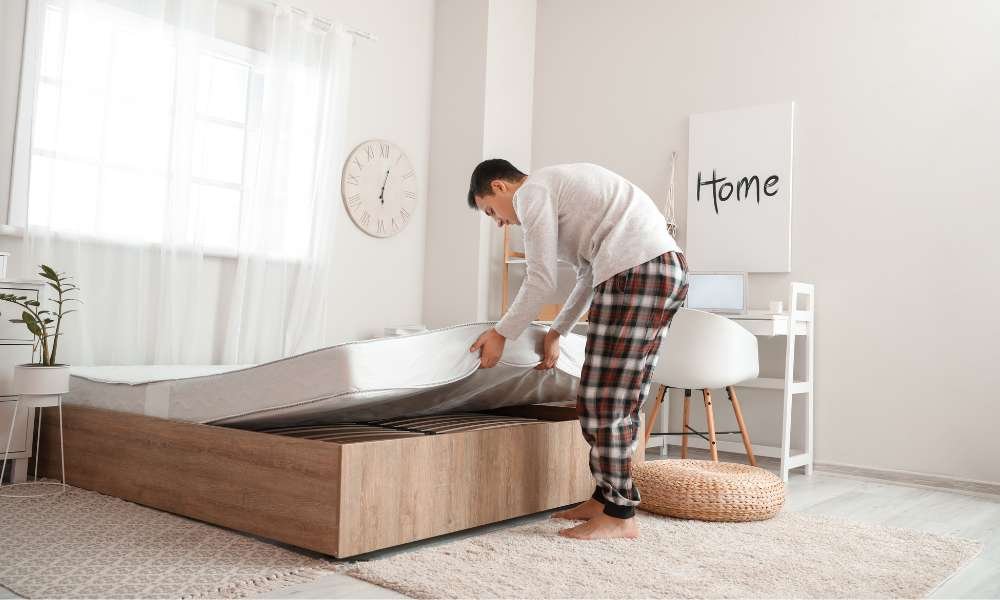Choosing the right size sheets for hospital beds is crucial for ensuring patient comfort and maintaining hygiene standards. Hospital beds come in various types, each with unique dimensions that require specific sheet sizes. From standard hospital beds, which typically resemble twin or twin XL sizes, to specialized bariatric beds designed for heavier patients, understanding these dimensions is key to selecting the appropriate bedding. Ensuring that sheets fit snugly and securely not only enhances the patient experience but also facilitates ease of care and maintenance. In this article, we’ll explore the common types of what size sheets for hospital bed and the corresponding sheet sizes needed to provide optimal comfort and functionality.
Understanding Hospital Bed Dimensions
Understanding the dimensions of hospital beds is crucial for selecting the right sheets. Standard hospital bed sizes include twin, twin XL, and bariatric, each catering to different patient needs. Unlike regular beds, Medical beds are designed with adjustable features to accommodate various medical conditions and treatments. For instance, a standard twin hospital bed typically measures 36 inches by 80 inches, slightly different from the regular twin size. This distinction ensures that sheets fit securely, supporting essential medical equipment and patient comfort. Selecting the appropriate sheet size enhances the overall care environment, making knowledge of these dimensions fundamental.
Types of Hospital Beds and Their Sheet Requirements
Hospital beds come in various types, each with unique sheet requirements that accommodate their specific functionalities. Standard hospital beds often need fitted sheets that can adjust to movements, such as those in adjustable beds, which frequently change position for patient comfort or treatment needs. For electric or semi-electric beds, choosing stretchable, snug-fitting covers ensures they stay in place despite frequent adjustments. Bariatric beds, designed for heavier patients, require larger, more durable sheets that can withstand extra weight and tension without compromising comfort. Selecting the right covers for each type of hospital bed enhances patient care and ensures functionality across diverse medical settings.
Standard Sheet Sizes for Hospital Beds

Choosing the right size sheets for hospital beds is crucial for ensuring comfort and ease of maintenance. Standard Medical beds typically accommodate sheets similar to those used for twin or twin XL beds. The most common sizes are 36 inches by 80 inches for fitted covers, which snugly cover standard hospital mattresses. Flat sheets are slightly larger, usually measuring around 66 inches by 104 inches, providing ample coverage for tucking under the mattress. Pillowcases designed for Medical beds are standard-size, fitting pillows with dimensions of 20 inches by 26 inches. Selecting the correct size ensures that covers stay in place and provide comfort and hygiene for patients.
Material Considerations for Hospital Bed Sheets
When selecting sheets for hospital beds, material choice is crucial for both comfort and hygiene. Cotton, polyester, and their blends are popular due to their softness and ease of care. For environments where cleanliness is paramount, antibacterial and hypoallergenic options are essential. These materials prevent the growth of bacteria and reduce allergens, enhancing patient comfort and safety. Always consider the specific needs of the healthcare setting and patient when choosing bed covers to ensure optimal comfort and hygiene.
Special Considerations for Fitting Sheets to Hospital Beds
When fitting sheets to hospital beds, especially those with rails or adjustable features, it’s crucial to choose covers that accommodate these modifications. For beds with rails, opt for sheets with deeper pockets to ensure they fit snugly without slipping. For adjustable beds, which often change shape, selecting stretchable fabric like jersey knit can offer better flexibility and maintain coverage. Always measure the bed’s dimensions, including any extensions or adjustments, to ensure the sheets cover the entire mattress. Using sheet fasteners or clips can also prevent the covers from dislodging, providing comfort and safety for the patient.
Where to Buy Hospital Bed Sheets

When searching for hospital bed sheets, consider reputable medical supply stores and trusted online marketplaces. Ensure quality by examining product specifications like thread count, material, and certification for hypoallergenic properties. Reviews and ratings from healthcare professionals and users can offer additional insights into durability and comfort. Opt for suppliers who specialize in medical-grade linens to guarantee that the covers meet rigorous health and safety standards. By focusing on these aspects, you can find high-quality sheets that provide comfort and longevity, tailored to the specific needs of Medical beds.
How to Care for Hospital Bed Sheets
Caring for hospital bed sheets properly extends their lifespan and ensures optimal hygiene. Regular washing and disinfecting are crucial; use hot water and a mild, hypoallergenic detergent to eliminate germs without damaging the fabric. For disinfecting, opt for a non-abrasive, EPA-approved disinfectant, especially designed for hospital-grade materials, which preserves the fabric’s integrity while ensuring thorough sanitation. Additionally, understanding the durability of various materials like cotton blends versus polyester can guide your maintenance routine. Cotton covers, for instance, offer comfort but may wear down faster than polyester, which is less comfortable but more durable and stain-resistant. Regular care not only maintains the freshness of the sheets but also provides a safer, more comfortable environment for recovery.
Common Questions About Hospital Bed Sheets
When selecting sheets for hospital beds, common questions often arise, particularly concerning the best types for long-term care or for those suffering from allergies. Healthcare professionals recommend hypoallergenic materials like bamboo or microfiber, which prevent allergens and are gentle on sensitive skin. These materials also offer durability and comfort, essential for patients requiring prolonged bed rest. Dr. Smith, a seasoned healthcare expert, suggests, “Choosing the right sheet material can significantly improve a patient’s comfort and reduce the risk of skin irritations.” Therefore, investing in high-quality allergy-friendly covers is crucial for enhancing patient care in hospitals.
Conclusion
Selecting the right size and type of sheets for hospital beds is crucial for ensuring patient comfort and functionality. The appropriate sheets enhance hygiene, provide ease of use, and contribute to the overall well-being of individuals requiring care. Always remember to measure the bed dimensions and consider the bed’s specific needs, such as adjustable settings or attached equipment, before making a purchase. We encourage you to prioritize comfort and practicality in your choices to ensure the best care environment. Explore our comprehensive range of hospital bed covers designed to meet diverse healthcare needs and enhance patient care quality. Choose wisely, as the right sheets can make a significant difference.



